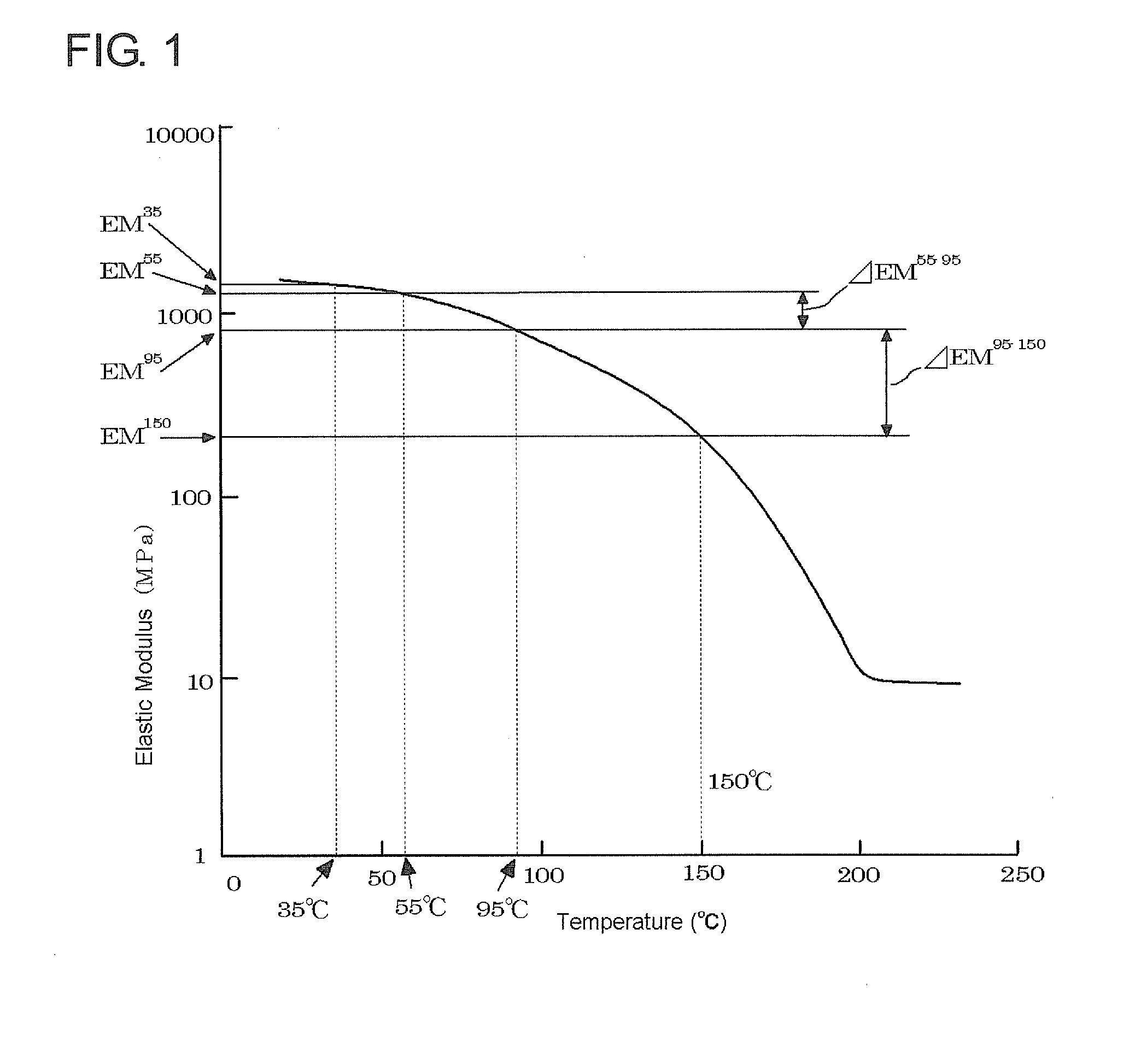Anisotropic conductive adhesive
a conductive adhesive and anisotropic technology, applied in the direction of conductive materials, non-conductive materials with dispersed conductive materials, light support devices, etc., can solve the problems of significant reduction of conduction reliability, increase of conduction resistance between the chip and the circuit, and generation of internal stress due to the difference in thermal expansion coefficient between the circuit board and the chip. achieve the effect of high conduction reliability
- Summary
- Abstract
- Description
- Claims
- Application Information
AI Technical Summary
Benefits of technology
Problems solved by technology
Method used
Image
Examples
reference example 1
Production of Acrylic Resin A
[0035]A four-necked flask equipped with a stirrer and a condenser tube was charged with 100 g of ethyl acrylate (EA), 10 g of glycidyl methacrylate (GMA), 0.2 g of azobisbutyronitrile, 300 g of ethyl acetate, and 5 g of acetone. The mixture was subjected to a polymerization reaction at 70° C. for 8 hours under stirring. Then precipitated particles were collected by filtration, washed with ethanol, and dried to obtain acrylic resin A. The weight average molecular weight of the obtained acrylic resin A was 80,000, and its glass transition temperature was −40° C.
reference example 2
Production of Acrylic Resin B
[0036]A four-necked flask equipped with a stirrer and a condenser tube was charged with 100 g of ethyl acrylate (EA), 10 g of dimethylaminoethyl acrylate (DMAEA), 0.2 g of azobisbutyronitrile, 300 g of ethyl acetate, and 5 g of acetone. The mixture was subjected to a polymerization reaction at 70° C. for 8 hours under stirring. Then precipitated particles were collected by filtration, washed with ethanol, and dried to obtain acrylic resin B. The weight average molecular weight of the obtained acrylic resin B was 80,000, and its glass transition temperature was 18° C.
reference example 3
Production of Acrylic Resin C
[0037]A four-necked flask equipped with a stirrer and a condenser tube was charged with 100 g of butyl acrylate (BA), 10 g of glycidyl methacrylate (GMA), 0.2 g of azobisbutyronitrile, 300 g of ethyl acetate, and 5 g of acetone. The mixture was subjected to a polymerization reaction at 70° C. for 8 hours under stirring. Then precipitated particles were collected by filtration, washed with ethanol, and dried to obtain acrylic resin C. The weight average molecular weight of the obtained acrylic resin C was 80,000, and its glass transition temperature was −70° C.
PUM
| Property | Measurement | Unit |
|---|---|---|
| frequency | aaaaa | aaaaa |
| anisotropic conductive | aaaaa | aaaaa |
| elastic modulus | aaaaa | aaaaa |
Abstract
Description
Claims
Application Information
 Login to View More
Login to View More - R&D
- Intellectual Property
- Life Sciences
- Materials
- Tech Scout
- Unparalleled Data Quality
- Higher Quality Content
- 60% Fewer Hallucinations
Browse by: Latest US Patents, China's latest patents, Technical Efficacy Thesaurus, Application Domain, Technology Topic, Popular Technical Reports.
© 2025 PatSnap. All rights reserved.Legal|Privacy policy|Modern Slavery Act Transparency Statement|Sitemap|About US| Contact US: help@patsnap.com


